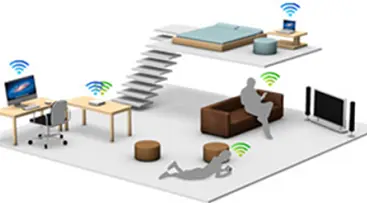Hello, For some context I am moving into my first home. I am looking for a network solution to use and will last a long time. My original idea was just getting a new wifi 7 router maybe a gaming one since gaming is my passion but I got talking to my friend and he has a ubiquity Dream Machine and talks really highly about it and I would love this/something similar to it. He showed me all the features it does and the layout of the UI etc. Being able to add security cameras to it and such is something I very much so want a long with a lot of the other things it can do. I am good with technology I am a software engineer and I currently have things such as netalertX and adguard home running on a mesh network so I can and would be willing to set things up.
Is this the only only type of device that does this kind of thing or are there others? Any suggestions or alternatives I like to look at options before buying.
Side note budget is relatively high aka I am willing and unless given alternatives I like more going to be going with the dream machine and the other required items from them. Thanks :)


So how deep down the rabbit hole do you want to go? For most people, not going to lie, get a high end “gaming router” for smaller place, or a big brand “mesh network” and you’ll be set. Blasphemy for the networking crowd, I know, I know. But at the end of the day, if you’re not planning to spend time setting things up and tinker, there’s not a lot to be gained going further.
However, if you’re willing to put in the time to learn and tinker, Ubiquiti is a good prosumer entry point. Their product line up has gotten quite confusing in the last little bit but the general idea is the same: You’d need 4 parts to form an actual network:
Some Ubiquiti devices covers more than one of those areas; for example the UDM mentioned actually covers all 4 areas, whereas, confusing as it may sound, the UDM Pro only covers 3 (no built in access point). This is because if you’re planning to cover a larger site, you may not want your wireless access point to be situated where your gateway is, and you’d rather the option to have hard disk trays to help keep more recordings from your security cameras.
Figuring out what your needs are, picking out the components, and figuring out where to place them is going to be part of the process. If this doesn’t sound appealing, that’s perfectly fine, but it may help you figure out the path you’d want to take forward.
I refuse to use Unifi products after a client’s one year old Cloudkey died because they use an actual hard drive inside for the OS, not just the data (it’s designed for storing NVR recordings).
They don’t even mirror the drive locally. There’s just everything wrong with this approach. The OS should run from M2 and the data drive needs to be mirrored - this is just basic high availability design today. And for the price they charge, there’s no reason to not do this. I just wonder what the requirements discovery looked like, and who signed off on such a weak approach.
For the price of a cloud key (which is essentially required for a business environment), it’s a piece of shit. Plus the damn things die all the time.
Add to it the whole system is problematic - they’re slow to discover devices when setting up/reconfiguring/replacing hardware, we’re constantly having to tinker with client sites for odd disconnects, etc.
Unifi belongs in the bin. For a home user you’d be better off with any decent consumer router, which doesn’t have the unnecessary complexity (and learning curve) of Unifi. I hate that it’s what our company prefers to deploy.
Sounds like that’s a bad experience resulted from what could’ve been avoided through proper backup management practices. Hardware failures are inevitable, and it is always prudent to manage backups appropriately. I’ll be the first to admit I’m not backing up my controller data properly, but at least mine is on a VM powered by a RAID array that I take snapshot semi regularly. Should the VM corrupt itself somehow, and I cannot get my backups deployed, I’d probably be hosed and have to restart from scratch, but that’d be on me for not testing my DRP.
For most SMEs, paying consumer grade equipment is out of the question, and paying for true enterprise grade stacks Meraki / Aruba might be out of the question due to budget constraints. Ubiquiti strikes a happy median for them, and residential users that want to opt for a bit more.